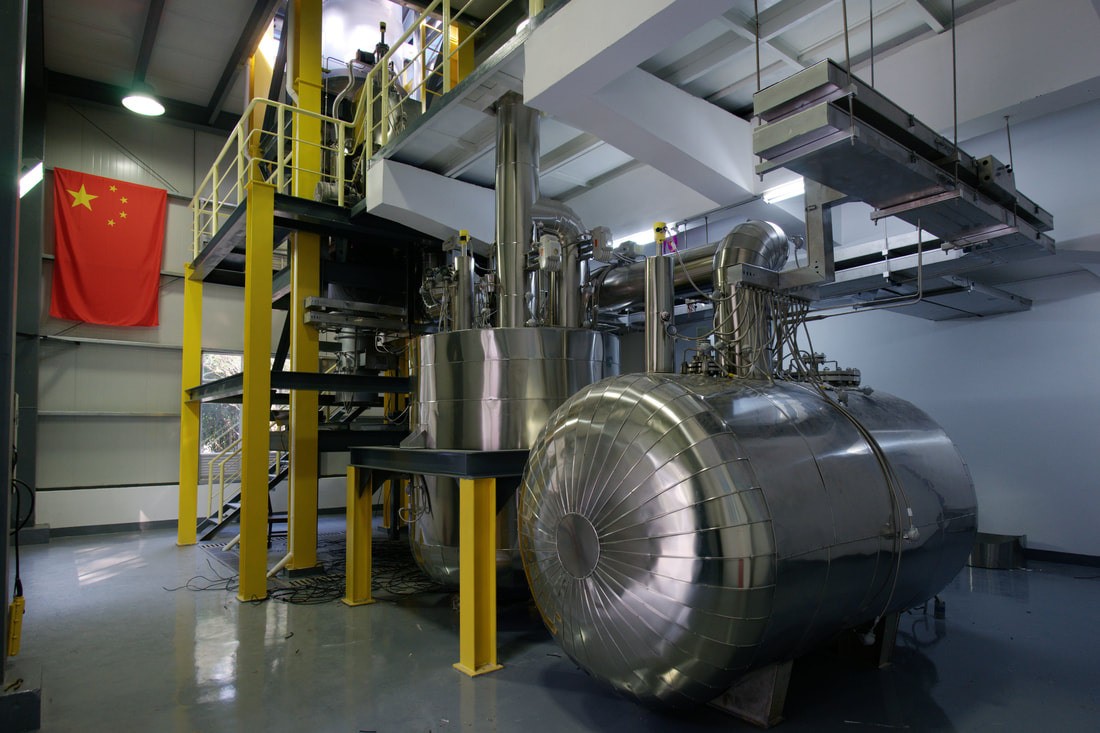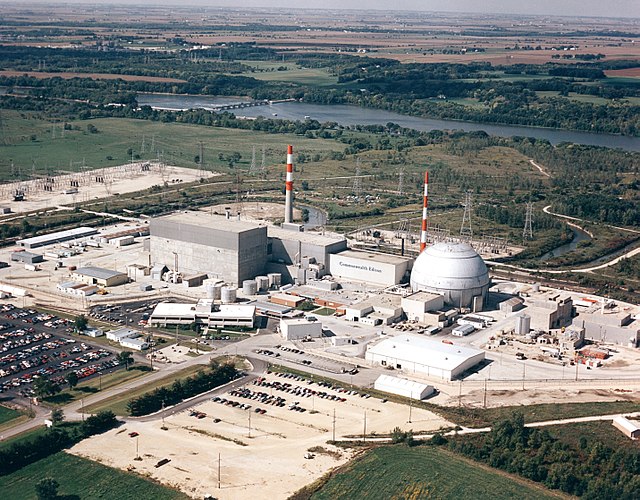Researchers use snakes to monitor radiation at Fukushima

A team of researchers from the University of Georgia have shown that radioactive contamination in the Fukushima Exclusion Zone can be measured through its resident snakes.


A team of researchers from the University of Georgia have shown that radioactive contamination in the Fukushima Exclusion Zone can be measured through its resident snakes.
Chuck Metz Jr. discusses his collaboration with Harold Denton, whose memoir interweaves a retelling of the Three Mile Island accident events with stories of his career-long advocacy for nuclear safety.

Metz
A number of years ago, historian and writer Chuck Metz Jr. was at the Bush’s Visitor Center in Tennessee’s Great Smoky Mountains when he ran into former Nuclear Regulatory Commission official Harold Denton and his wife. Metz was at the visitor center, which opened in 2010 and is now a tourist hotspot, because, as he explained to the Dentons at the time, he had overseen the development of its on-site museum and had written a companion coffee-table history book.

The chance meeting turned into a friendship and a fruitful collaboration. Denton, who in 1979 was the public spokesperson for the NRC as the Three Mile Island-2 accident unfolded, had been working on his memoir, but he was stuck. He asked Metz for help with the organization and compilation of his notes. “I was about to retire,” Metz said, “but I thought that exploring the nuclear world might be an interesting change of pace.”
Denton passed away in 2017, but by then Metz had spent many hours with his fast friend and was able to complete the memoir, Three Mile Island and Beyond: Memories of a Life in Nuclear Safety, which was published recently by ANS. Metz shared some of his thoughts about Denton and the book with Nuclear News. The interview was conducted by NN’s David Strutz.

If Taishan-1 were operating in France, Électricité de France would shut down the reactor in order to assess the situation in progress and stop its development, according to a July 22 press release from EDF. The 1,660-MWe French-designed EPR—the recent subject of sensational press coverage of fuel rod failures—operates in China’s Guangdong Province.
The next opportunity to earn professional engineer (P.E.) licensure in nuclear engineering is this fall. Now is the time to sign up and begin studying with the help of a new online module program from the American Nuclear Society.

Akron, Ohio-based FirstEnergy Corporation has been charged with wire fraud and will pay a $230 million monetary penalty over its role in a $61-million corruption and racketeering scheme to secure state subsidies for Ohio’s nuclear power plants, Davis-Besse and Perry.

Foro Nuclear, a Madrid-based association representing the interests of Spain’s nuclear sector, is not at all happy with its government’s involvement in a letter sent late last month to the European Commission calling for the exclusion of nuclear energy from the European Union taxonomy. (The taxonomy is a classification system establishing a list of environmentally sustainable economic activities for the EU.) Signing the letter were Spain’s minister for ecological transition and minister for the economy, as well as ministers from Austria, Denmark, Germany, and Luxembourg.

In July 1969, the public’s attention was fixated on NASA’s Apollo 11 mission—a “giant leap for mankind” that was memorably marked by Neil Armstrong as he stepped onto the surface of the moon. This July, the possibilities of spaceflight are once again capturing the public’s imagination and news headlines. While NASA invests in nuclear propulsion research and development to stretch the limits of U.S. space missions, private companies Virgin Galactic and Blue Origin are stretching the definition of “astronaut” and proving they can offer a high-altitude thrill to paying customers.
 A report released last week by the Nuclear Sector Deal’s Innovation Group sets out a series of recommendations for the United Kingdom to realize the opportunity of zero-carbon hydrogen derived from nuclear energy.
A report released last week by the Nuclear Sector Deal’s Innovation Group sets out a series of recommendations for the United Kingdom to realize the opportunity of zero-carbon hydrogen derived from nuclear energy.
“Sector deals,” according to the British government, are partnerships between industry and government on sector-specific issues to create opportunities to boost productivity, employment, innovation, and skills. The Nuclear Sector Deal, launched in June 2018, was developed by the Nuclear Industry Council.

China is moving ahead with the development of an experimental reactor that would be the first of its kind in the world and “could prove key to the pursuit of clean and safe nuclear power,” according to an article in New Atlas.

In the latest legal action over the New Jersey Board of Public Utilities’ (BPU) April 2019 order providing subsidies to the Hope Creek and Salem nuclear plants, the state’s Supreme Court has declined to hear an appeal.
The nuclear community has been one of the safest and lowest-risk industries in the world, allowing it to compete in a crowded energy sector without compromise. This defining ethos is predicated on strong, emotionally safe cultures that have enabled the nuclear power sector to honestly and transparently learn from notable mistakes, such as the design flaws that led to the 2011 Fukushima Daiichi accident, resulting in a safer, more competitive industry.
The United States and the Republic of Ghana have signed a nuclear cooperation memorandum of understanding. The NCMOU is a diplomatic instrument that, according to the U.S. State Department, strengthens and expands “strategic ties between the United States and a partner country by providing a framework for cooperation on civil nuclear issues and for engagement between experts from government, industry, national laboratories, and academic institutions.”

When Utah Associated Municipal Power Systems (UAMPS) in 2015 announced its plan to develop the Carbon Free Power Project (CFPP) using NuScale Power’s modular light water reactor design, it envisioned the construction of a dozen 50-MWe modules for a plant that could produce a total of 600 MWe. The CFPP’s target output later rose to 720 MWe, when UAMPS opted to scale up to 60-MWe modules. In late June, the plans changed once again, as UAMPS participants chose to build 77-MWe modules but downsize the plant from 12 units to six, which would yield 462 MWe—about 64 percent of the 720 MWe that could have been generated from 12 of the 60-MWe modules.

As Illinois lawmakers continue to debate energy legislation that would allow the state’s Byron and Dresden nuclear plants to continue operation beyond this year, Exelon would like to remind everyone—including those legislators, no doubt—of what is at stake.

A statistically predicted tendency for neutrons produced inside fission reactors to form in clusters can cause asymmetrical energy production that is counterbalanced, at least in part, by the spontaneous fission of radioactive material in the reactor.

Nuclear waste should not be used as an excuse for trying to shut down nuclear reactors, says radiation safety expert Andrew Karam in his recent article for the American Council on Science and Health titled, “Let’s Talk about Radioactive Waste."

Finan
There is a lot of buzz around advanced reactors, and for good reason, according to Ashley Finan, director of the Department of Energy’s National Reactor Innovation Center (NRIC). In the article 3 Ways to Make Nuclear Power Plants Faster and More Affordable to Build, published earlier this month on the DOE’s website, Finan noted that advanced reactors promise to be cheaper to build and operate, offer enhanced versatility, and can help put the United States on a path to achieving net-zero emissions by 2050.
The key cost driver will be construction and project management, “areas that have plagued the industry for decades,” Finan noted.
“For advanced nuclear energy to realize its potential, we have to make it more affordable and scalable. Only then can it meaningfully contribute to our energy, security, and environmental imperatives,” she added.
The House Committee on Appropriations last week approved an Energy and Water Development funding bill for fiscal year 2022 that provides an 11 percent increase for the Department of Energy’s Office of Nuclear Energy.
Reported favorably out of committee on July 16 via a party-line vote of 33 to 24, the House bill sports a total price tag of $53.2 billion, an increase of $1.5 billion from the FY 2021 enacted level. (The committee’s official report on appropriations for the next fiscal year can be found here.)

The International Atomic Energy Agency has broken ground for a new building designed to help countries combat nuclear terrorism in areas such as illegal material trafficking and physical protection of facilities.

Capito
A bipartisan group of senators has reintroduced the American Nuclear Infrastructure Act (ANIA), initially introduced last fall in the previous Congress. Sponsors include Sens. Shelley Moore Capito (R., W.Va.), the ranking member of the Senate’s Environment and Public Works Committee; John Barrasso (R., Wyo.); Cory Booker (D., N.J.); Mike Crapo (R., Idaho); and Sheldon Whitehouse (D., R.I.).
Last month, the American Nuclear Society joined 23 other nuclear-focused entities in signing a letter to those lawmakers urging reintroduction of the bill.